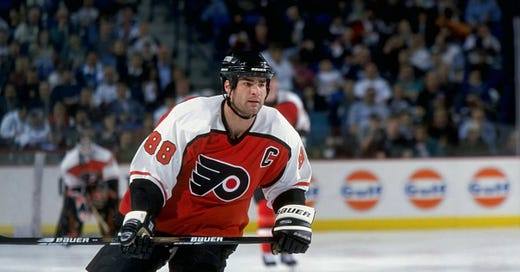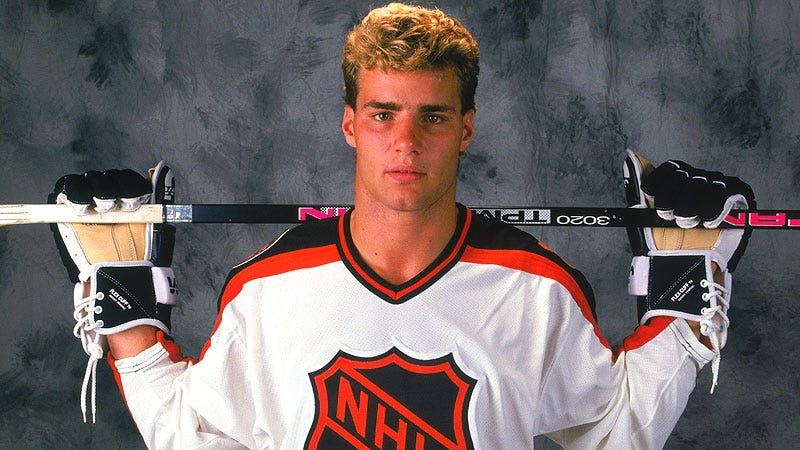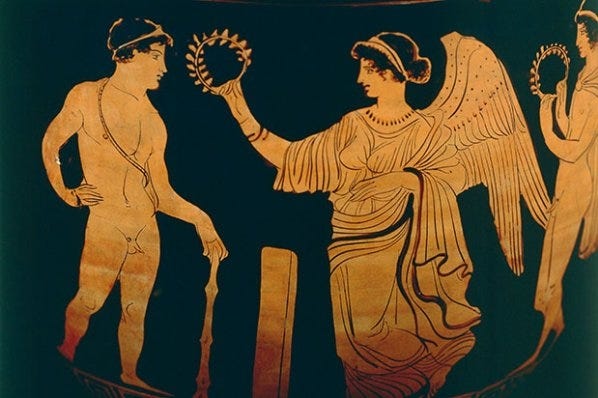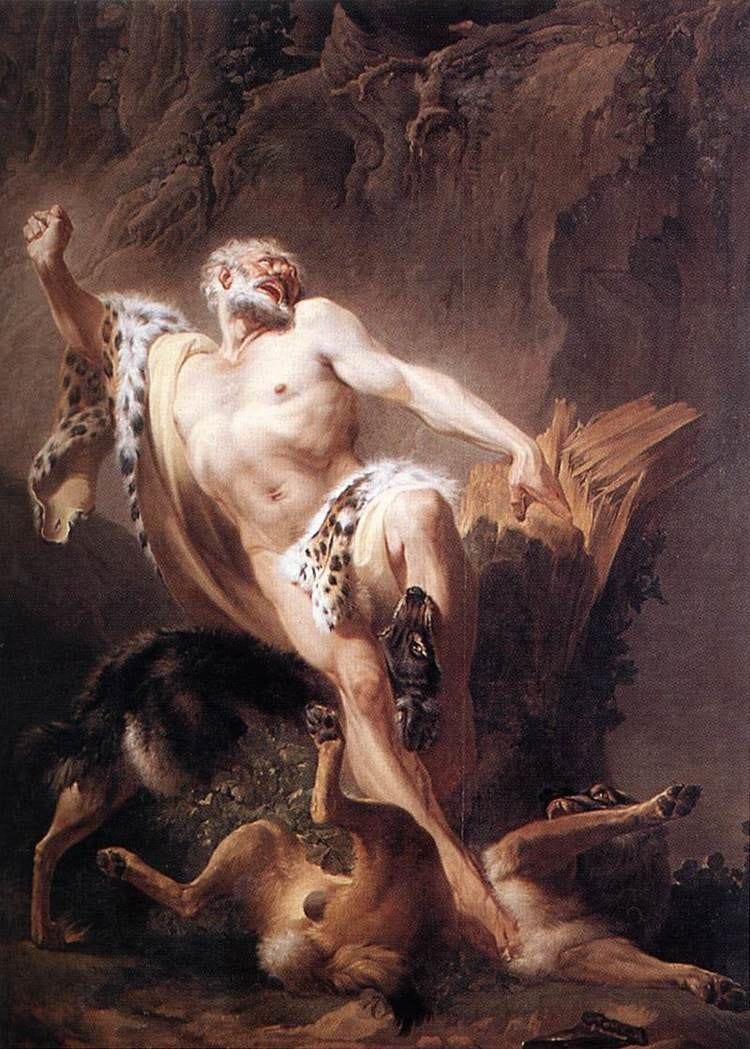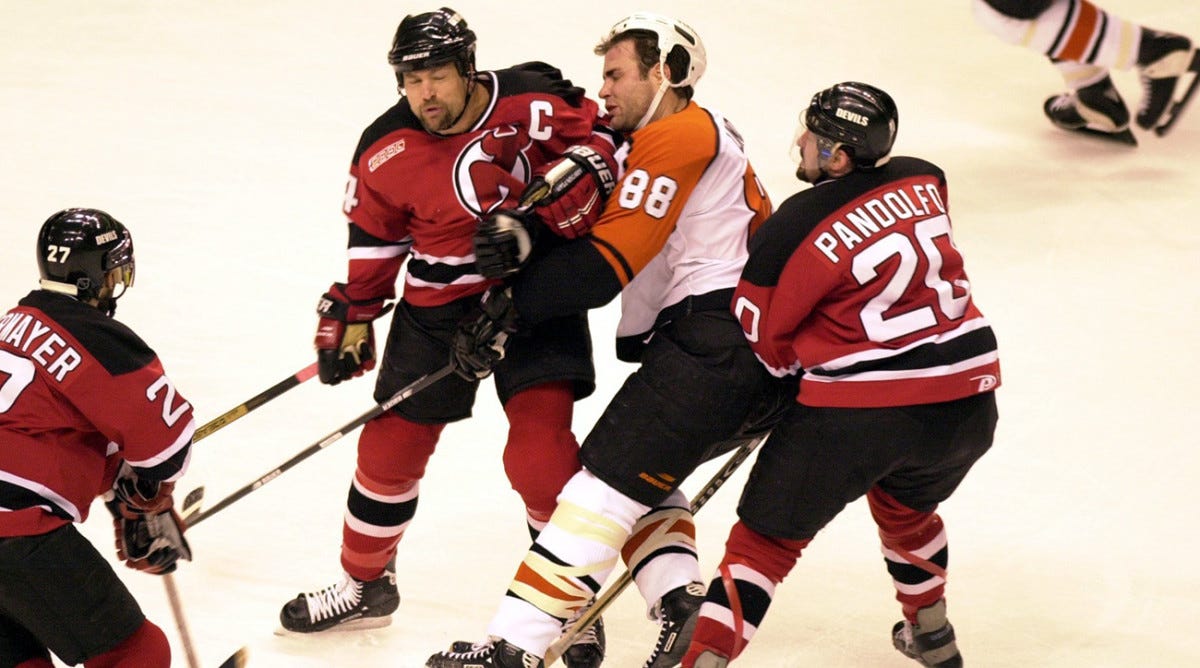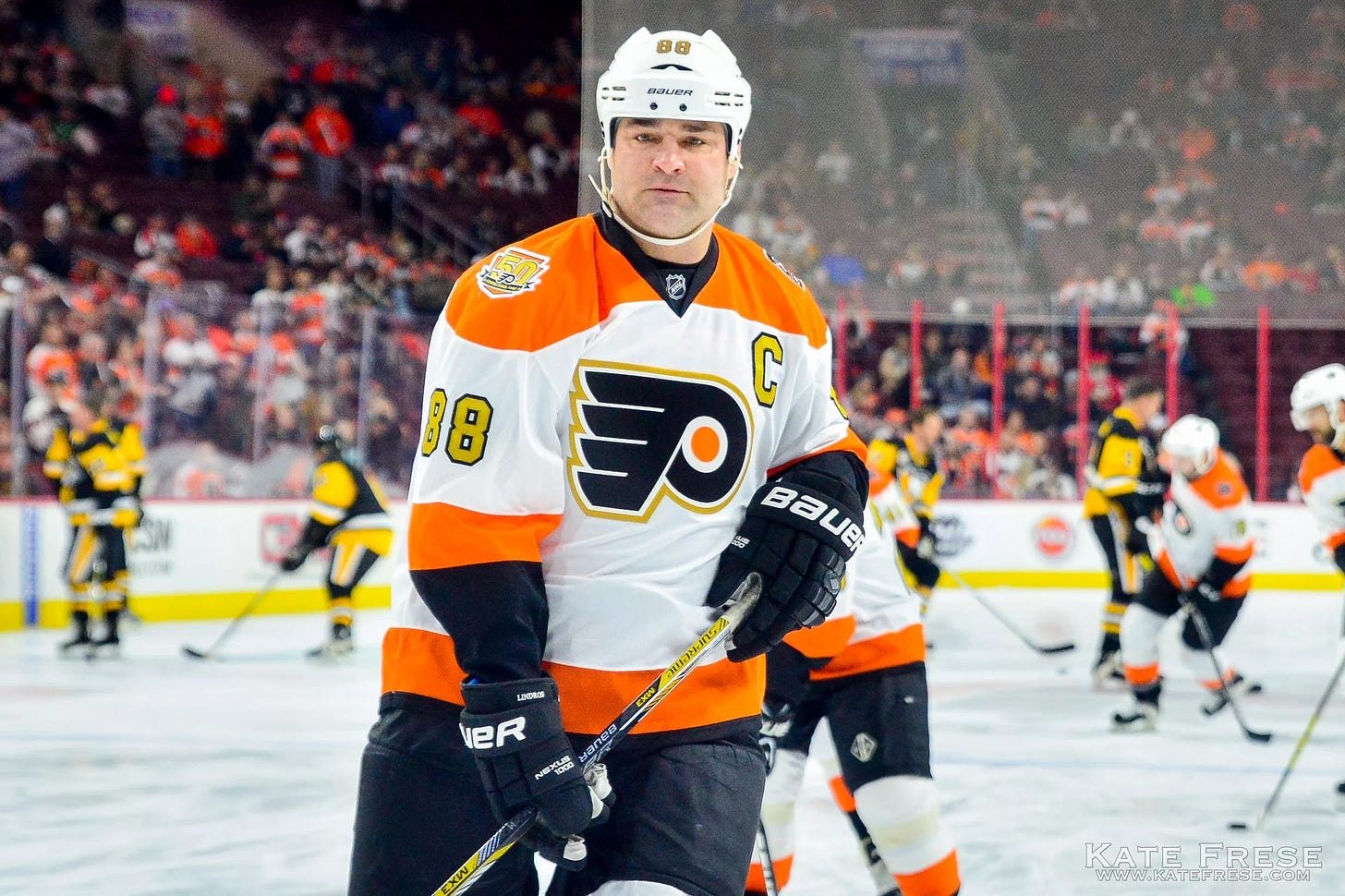The story of Eric Lindros is straight out of Greek Mythology
A hero with an achilles heel. The source of his power became his downfall.
It’s a universal lesson on virtue, character, and working on your weaknesses from modern sport that stretches back to the Ancients.
Eric Lindros was a freak on the ice
Never before had the biggest, strongest, meanest player also been the most skilled and talented.
In ice hockey that's a fearsome combination and many projected Lindros to become even better than the game's all time greats: Wayne Gretzky and Gordie Howe.
In the year before being drafted #1 overall into the NHL Lindros won his league scoring title, league MVP, Canadian player of the Year, and top prospect in the world's best development league, the CHL.
He led his team to a national title proving he could not only score and dominate, but lead a championship team.
But when he arrived in the best league in the world, the NHL, things were different.
No longer was he by far and away the biggest and strongest player.
He couldn't 'skate by' (pun intended) anymore on his size and strength.
He needed to overcome his weaknesses, which was overly relying on his strength and not developing himself fully.
I'll save what happened to him for the end, but for now let's dive into ideas of virtue, character, and the role of sports from the Ancient Greeks themselves.
Sport, Virtue, and Myth
The Ancient Greeks famously mythologized the most famous ancient athletes.
Names like Milo, Theagenes, Diagoras, and Archicchion litter the ancient record.
Milo was the strongest of them all and desceded from Hercules.
Theagenes was turned into a diveine healer and prayed to as a demi-god.
Diagoras founded an athletic dynasty of heroic champions.
Archicchion chose death instead of quitting and lives forever as a legend.
Why did the athletes become larger than life itself?
The answer lies in their ability to overcome their natural weaknesses through hard work and deterination.
Aristotle, the famous ancient Greek philosopher, defined character precisley this way.
Virtue isn't what you are naturally good at.
It's overcoming what you aren't and becoming good at it.
Athletes exemplified this better than any other 'character' in the ancient greek world.
When they achieved greatness in sports they displayed the outcome of working on weaknesses to become strengths.
This made them paragons of virtue, not in their specific acts, but in the process of becoming worthy of athletic victory.
Hubris was the ultimate downfall and a warning.
The myths of the ancient athletes confirm this.
Let's take Milo, the most famous of all the ancient athletes.
Hubris is essentailly over confidence and arrogance combined to produce an epic downfall.
After laying claim as the most victorious athlete in the Ancient Olympics Milo began acting like he was undfeatable in life as well.
Legend has it that he was walking in the woods and came across a man trying to break a tree stump apart using wedges.
Milo scoffed and said he could split the trunk with his HANDS.
He reached in but instead of breaking the stump apart he found himself hopelessly stuck.
Depending on the source, Milo was then devored alive by wolves or lions, unable to free himself from this unwitting trap.
The lesson is stark
Don't let the source of your acheivements become the cause of your failure by neglecting to take care of your weaknesses
Now let's return to Eric Lindors and try to apply these deep lessons to our own lives
The demise of the Big-E
When Eric Lindros entered the NHL he played the same way he’d always played.
He found great success early on in his career.
In just his 4th year he won the MVP award and was voted most outstanding player by his peers.
In his 5th season he led his team to the Stanley Cup finals only to lose to emerging dynasty of the late 90's Detroit Red Wings.
But his style of play was casuing him big problems with his health.
He was used to being unhittable in junior, so as a pro he exposed himself in dangerous situations.
He carried the puck across the blue line with his head down and opponents caught on and were waiting for him.
His pro career, which showed so much promise, began to deterioate as he sustained big injury after big injury, namely consucssions through viscious body checks to the head (illegal in the game now but 100% legal then)
In 1998 he was taken out by Darius Kasparaits for 18 games, his first of many concussions.
Between 1999-2000 he suffered three more brutal concussions, the final one depicted in the picture above by Scott Stevens.
He was never the same, a shell of himself, and played out his career with middling success and four more brutal concussions.
TAKEAWAYS
Lindros' strength became his weakness when he was unable to adpat to new situations and chgallenges.
This is a huge learning oppotunity for us.
The ancient philosopher Aristotle teaches us that character' isn't what we're born with or naturally good at but what we work on consciously to improve oursleves.
So Lindros relied on his natural talent but never worked on his character in the game.
He never improved his areas of weakness which created a blind spot, an achilles heel, and led to his demise.
For us the lesson is clear.
We are all born with natural talents and skills.
Some of us are kind, some smart, some dedicated, others adaptive.
Don't take outsized credit for what you are naturally good at.
Instead work harder on your weaknesses and amake them strong parts of yourself
That's how you earn character.
That's how you stop those blind spots from appearing, where you think everything is ok until suddenly it's not.
The story of Eric Lindros should teach you that your strength could turn out to be an illusion.
So best start working on those weaknesses.
If you struggle to even identify your weaknesses out of fear I’m here to help. Send me a message and I can aim you in a way that’s helped my coaching clients find peace with themselves before embarking on the long journey of self development.
If you enjoyed the article share it with others and leave a comment.

